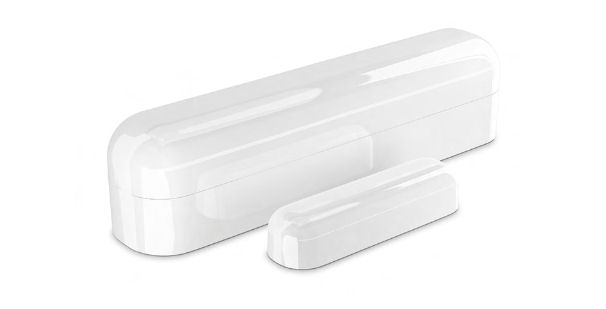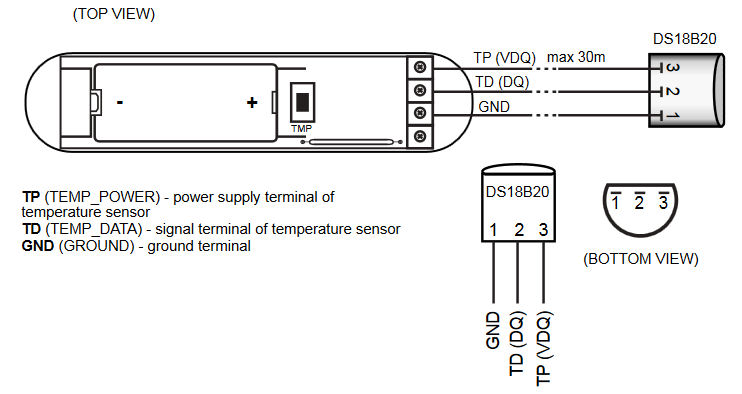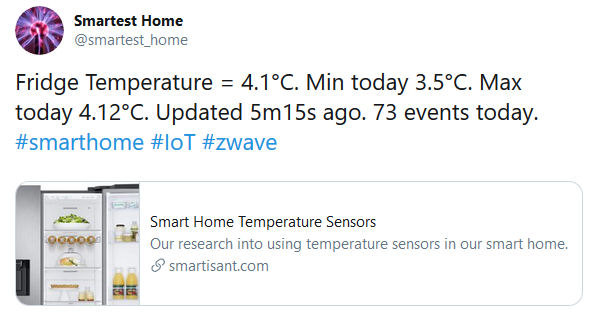Fridge Temperature Project

I have often though it would be useful to monitor the temperature in my fridge, partly out of curiosity and also to know if the fridge door has been left open.

I happened to find an old Fibaro FGK-101 (my review of this sensor) and though it might work well in this application.
The Fibaro FGK-101 Z-Wave door/window contact sensor supports and optional Dallas 1-Wire DS1820, which is my favourite temperature sensor and the one I use most in our contextual smart home. It is cheap, accurate and works brilliantly easily with Arduino processors too.
Design & Build

There isn't much more to say beyond what I have written in my review of the Fibaro FGK-101 sensor .
I'm not using the door contact sensor functionality mainly because you can't leave our fridge door open. It has a clever hinge mechanism that means it shuts itself on its own. I might do this later to track the fridge door being opened and closed though. I could then put the DS1820 on extension wires to ensure it remains more central in the fridge. I'm not doing this for now, as I'm currently testing to find the best place to locate the FGK-101 sensor.
Vera Plus
I'm using my Vera Plus in a fairly non-standard way compared to most people. Essentially it is acting as a 'gateway' or 'bridge' between Z-Wave and my own Home Control System. This is achieved by the Vera Plus reporting state changes and updates as events. Things like temperatures and battery levels are scheduled updates. The temperature is typically reported every 9 minutes and the battery level every 59 minutes, using scheduled scenes.
It is quite easy to do this using LUUP code on the Vera and it support low-level socket layer communications to enable this. If the temperature exceeds certain limits, these are also reported immediately.
Battery
I avoid wireless sensors with batteries as much as possible possible and I especially avoid devices with unusual batteries like this. The ER14250 (about ½ AA size) 3.6V battery is expensive. In my experience, battery life never lives up to the manufacturers claims.
A fridge is a particularly challenging environment for a battery, with the temperature being around 4°C. I don't expect battery life to be good!
- A new battery was installed on 25th Feb 2020 and the reported battery level was 100%.
- Just a few days later (29th Feb) is was down to 98%.
- On the 5th September it was 77%.
Range
I'm essentially putting the Fibaro sensor in a metal box, albeit one with gaps. I really wasn't sure how well the Z-Wave radio would work in this environment but it seems to be working well and reliably. I guess it helps that I have quite a few Z-Wave appliance modules in wall sockets around my house, and these act as local relays as part of the Z-Wave mesh network.
Installation
I've put the sensor as near to the middle of the fridge as possible, to get an average reading. My experiments has shown that the temperature varies a lot within a fridge. Enclosed spaces such as egg containers and salad drawers tend to be warmer as the cold air entering the fridge from the compressor can't enter all these spaces.
Modern fridges are also not very well insulated really, which is a real shame as they could be much more efficient. The main reason for this is because more insulation would reduce the storage space inside.
In Use
Monitoring the fridge temperature gives us peace of mind, in that our contextual smart home will let us know if the temperature is outside defined limits. This is typically done using a notification but our smart home will also make a voice announcement and will set of an internal alarm.

Occasionally, our @smartest_home will tweet about the fridge temperature.
If the fridge temperature crosses defined threshold values, there will be a voice announcement around our home.
Further Reading
- My research on temperature sensors.



